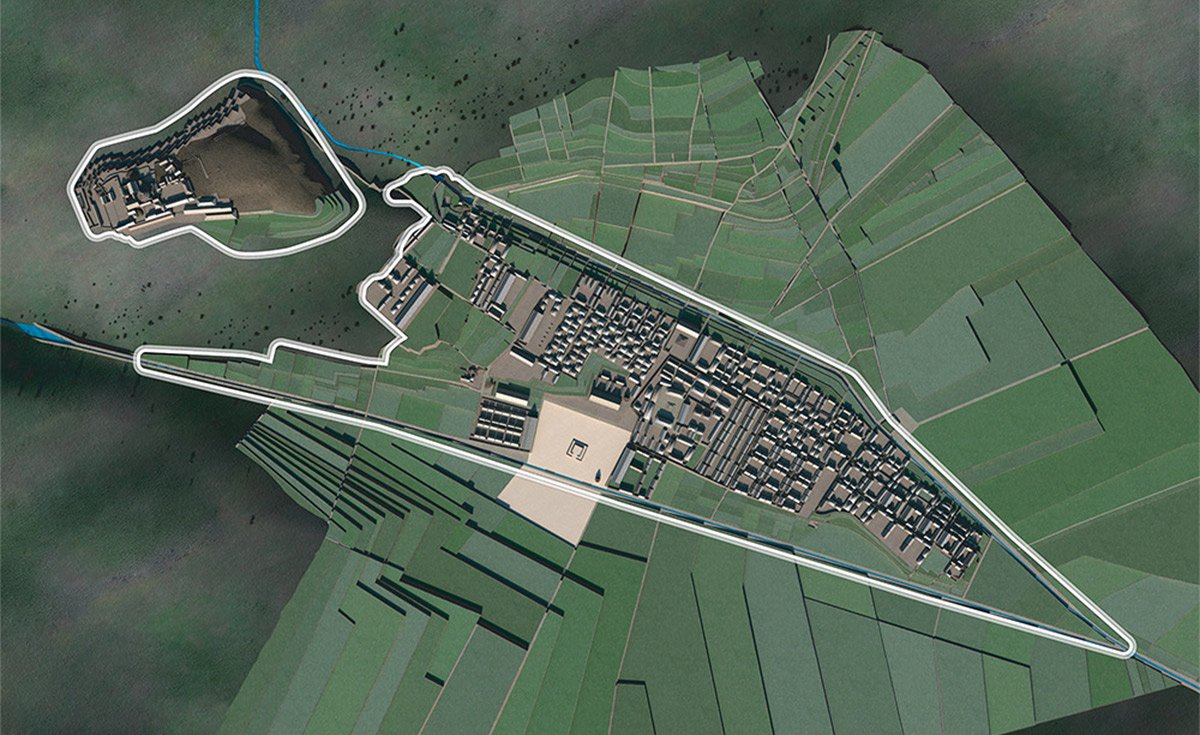
Mystic Cusco City Tour ~
This one-day immersion in the mystic path of the Andean Cosmovision takes you into the great historical city of Cusco. The center of the Inca empire, this famous city’s original name, is“Qosq’o”, meaning navel.
This experiential education of Andean Mysticism will explore the energetic dimension of our Living Universe, by learning to sense our energy body and energy around us. Within the energy body of each person and animal, the Andean mystics understood that we have certain power spots called “ñawis” in Quechua, associated with the “chakras” as understood in India.
In this great city, we will uncover the mystical significance of the Puma: how this capital city of the Incas was designed in the shape of the Puma, with the ñawis of this important animal totem. The form of the Puma was also designed to correspond to the great “Qapac Ñan”, the Inca Road that connects this civilization center to the 4 divisions of the Empire, the “Tawantinsuyo” that once stretched from Colombia to Chile.
We will visit these power places, and explore in detail about their functions and traditions in Inca society, this giving us a glimpse into the cultural life of the Incas, a society which was deeply rooted in its spiritual beliefs, founded on an intimate connection with the living energy of the Cosmos.


While walking along our mystic tour of this popular tourist attraction, you will see how the lively Andean culture bustles today on top of the many layers of historical periods of this fascinating city.
Gaze at graceful modern hotels housed within colonial buildings that boast beautiful curved arched entrances and elaborately carved balconies.
Appreciate Inca construction with trapezoidal doorways and windows,
Marvel at the ingenuity of ancient masonry, with the immense stones, each completely unique in shape but perfectly cut to fit the stones around them.
Watch people dressed in colorful traditional clothes from handwoven textiles, practicing the dances of their ancestors in the town squares or performing in the multitude of festivals that are celebrated throughout the year.
And while we’re there, we can enjoy fine Andean cuisine!

Mt. Ausangate, the greatest Apu (sacred mountain) of the Cusco region, casts its impressive presence over the city.

Cusco, the city of the Rainbow

Paccha Fountain, at the root chakra, or "siki ñaw", of the Puma in the ancient Inca city, located at the convergence of two rivers now buried beneath Av. el Sol and Av. Tulumayo.

Beneath the Catholic church stands the immense foundation of the great Inca temple of the sun. This is the "qosq'o" ñawi, the navel chakra, at the navel of the Incan empire.

Below Qoricancha still remains a large part of that great temple, robbed of its lavish gold ornaments but still breathtaking. A small glimpse of what lies within the ancient Inca Temple of the Sun.

A rainbow over the Cathedral, built upon the foundation of the Inca royal palace. This powerful spot is located right at the Plaza de Armas, which was the center where the 4 roads leading to the four quarters of the Inca empire converged.

The Wiracocha stone still stands in the corner of the cathedral, emitting the energy of this power center, the "sonqo ñawi", heart chakra of the city of the Puma.

A woman brings offerings and asks for blessings at this ancient pre-colonial sacred stone dedicated to the Great Creator in the corner of the cathedral.

In a strange combination of Inca history and European taste, the statue of the great Inca, Pachakuteq, at the center of the main plaza. Its base is an imitation of ancient Greek style.

The church of San Cristóbal overlooks the city, just below the great enigmatic archeological site, Sacsayhuaman. This is the area that is associated with the "kunka ñawi", the throat chakra of the Puma.

Monument honoring Inti, the sun god.

A mural on the main avenue of the historic city, depicting the history of Cusco.

The Andean people love their traditional dances, wearing colorful costumes.

Dances in the central street of Cusco during the weeks leading up to the great winter solstice celebration, Inti Raymi.
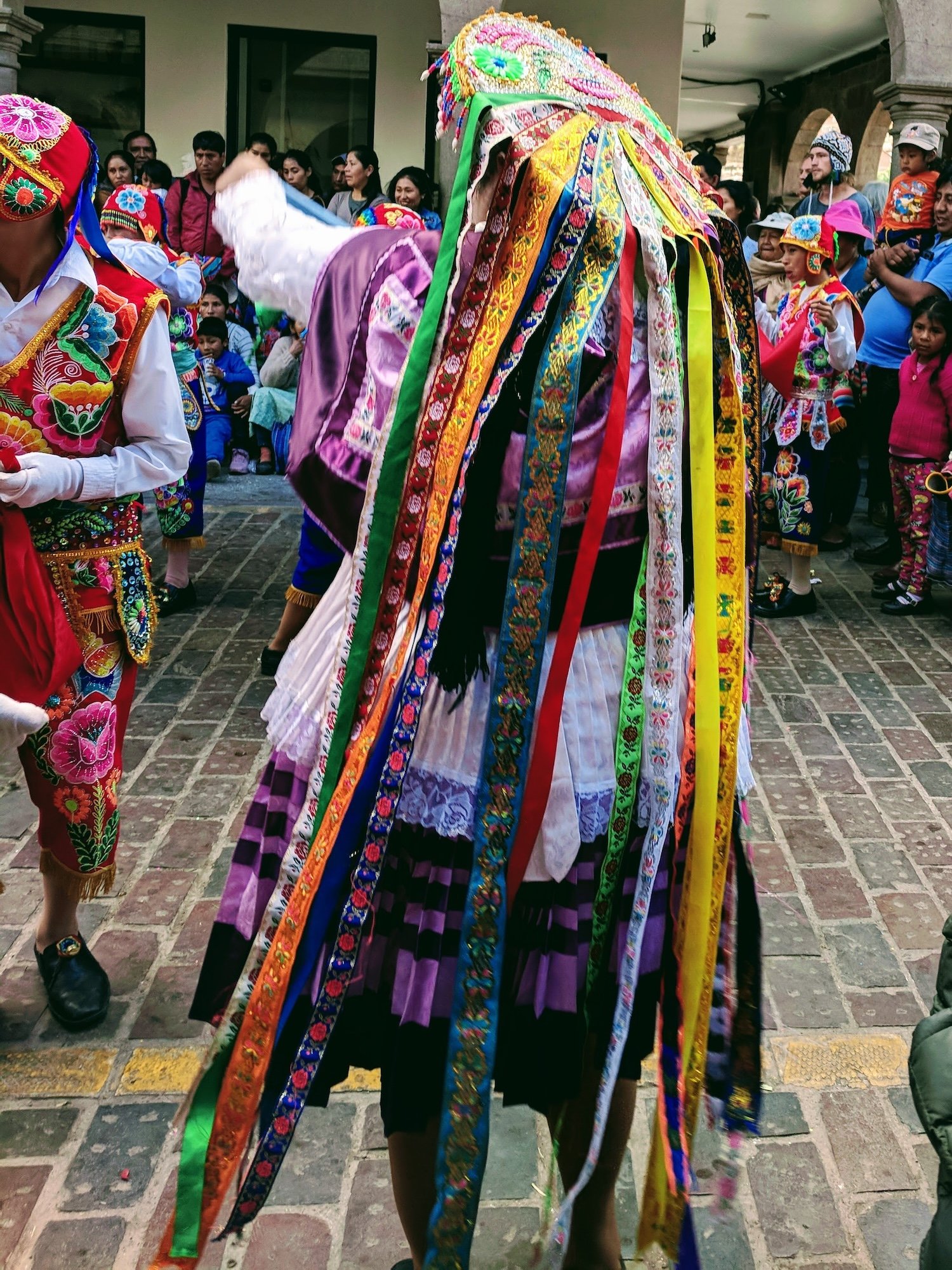
A woman dressed up for dance, with long colorful ribbons.

A sample of the great stones that will remain standing to the end of time, keeping their secrets of the lost engineering technology of a great mysterious past civilization.

Carved into some of these ancient stone walls are the shapes of the serpent, also an important power animal in mystical Andean cosmovision.

We will never be able to see the full glory of beauty in the great Inca temples, adorned in gold and silver. But the beauty of the colonial style is quite impressive, as we see here.
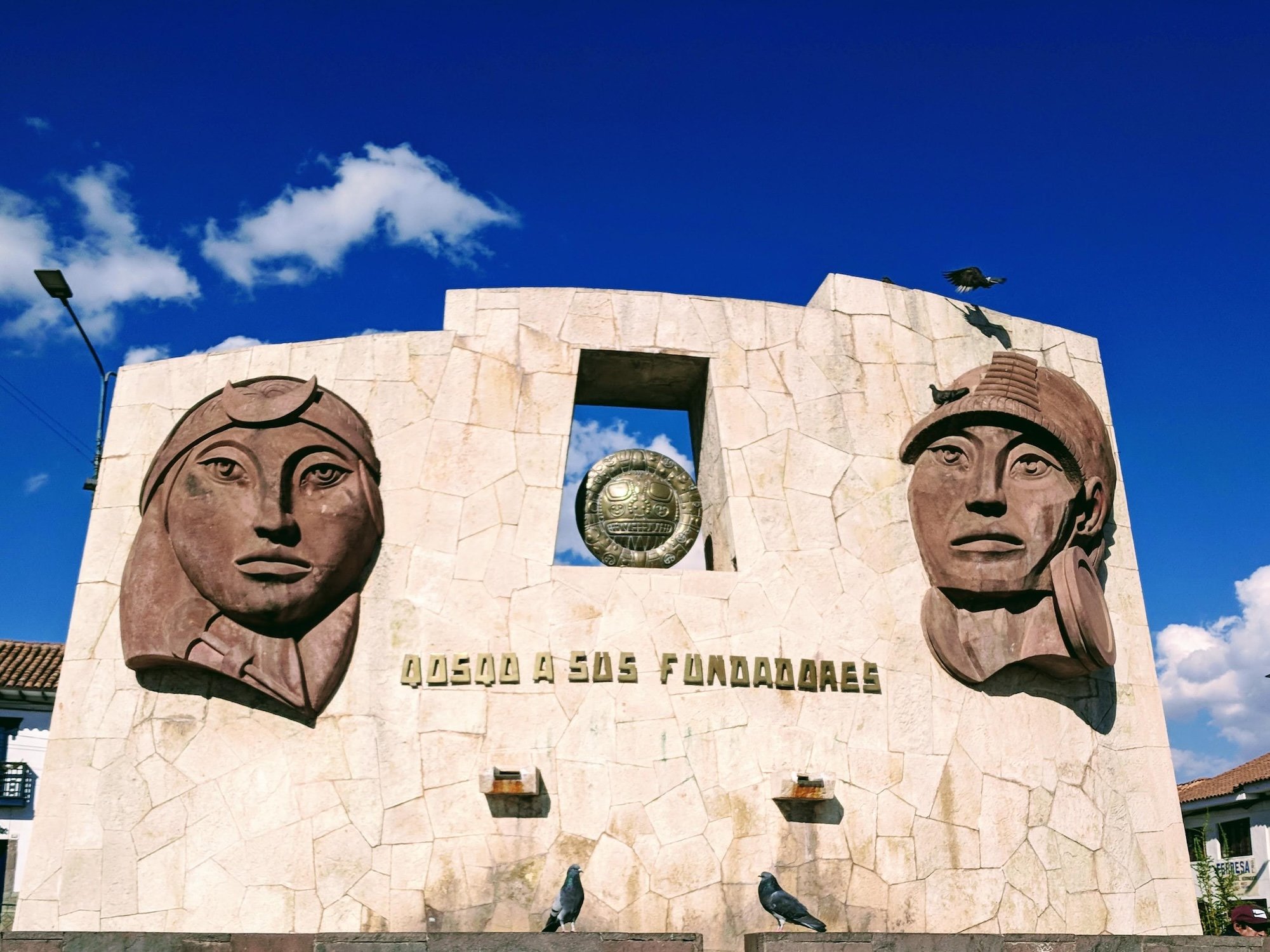
Manco Qapac, and Mama Ocllyu, according to the myth, are the couple who were descendants of the sun and moon, and founded their civilization in the city of Cusco.

A beautiful entrance to the history museum showcases three periods of stone construction: pre-Inca, Inca and colonial.

The traditional trapezoidal double doorways of the Inca are found everywhere in the historical center of the city.
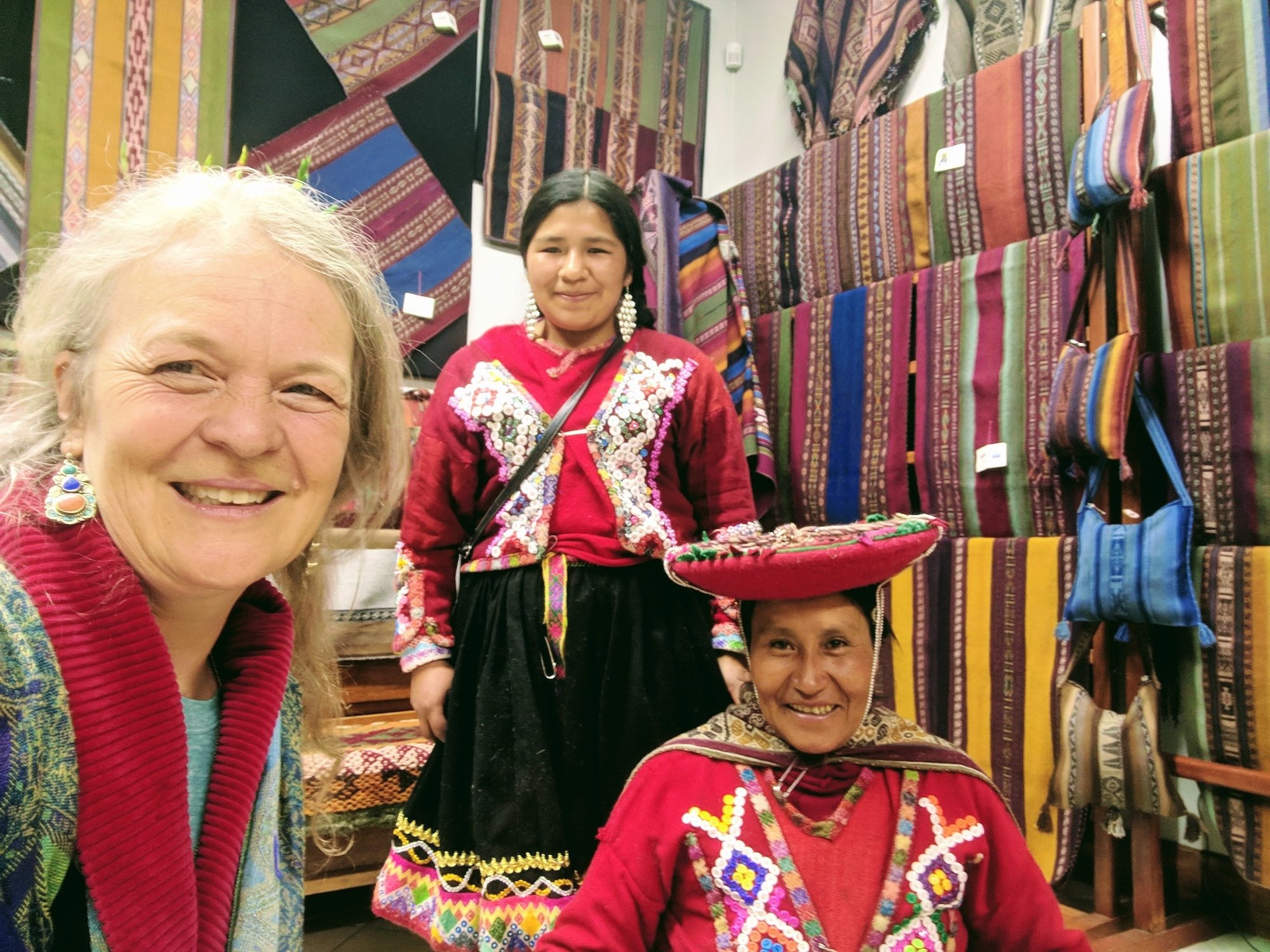
A visit to the weavers at this museum highlights the Andean cosmology as expressed in the symbolism in Andean textile designs.
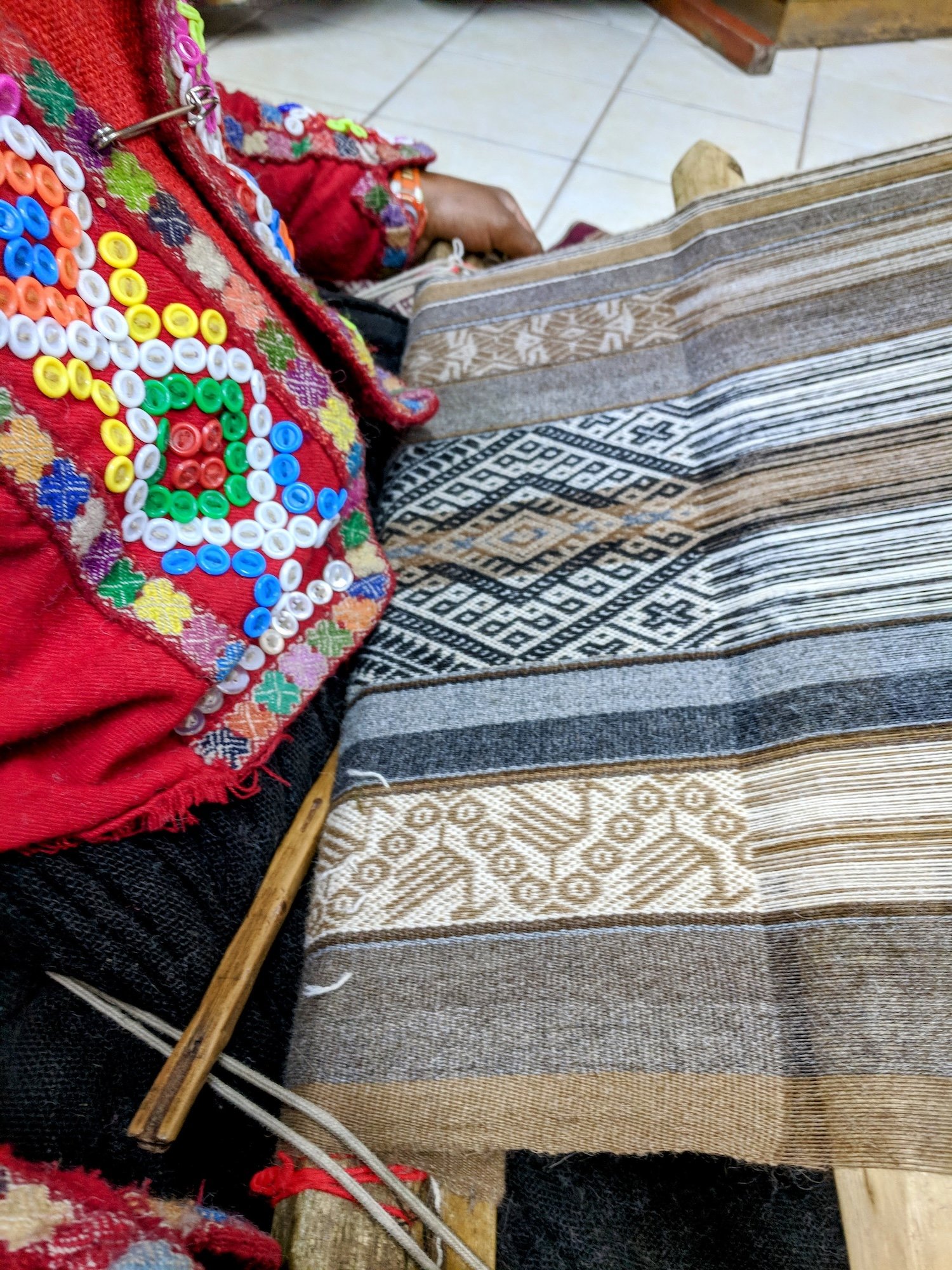
Watch, mesmerized, as the women's skillful hands fly across the loom to create elaborate designs.

A picture demonstrating many periods of history: ancient perfectly square stones on the right, rounded stones on the left, and chakanas all through the middle...
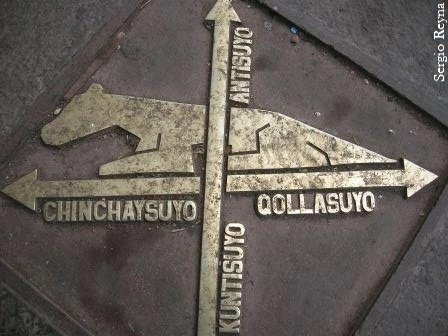
A plaque to show the center from which the four directions of the great Inca Trail, the "Qapac Ñan", radiate out to the four corners of the great Incan empire.

Karupureq with Andean ladies, all in their colorful and festive traditional clothing.

When you come to Cusco you can get a photograph with the ladies in traditional costume. You might even be able to hold the cute little baby llama.

When in Cusco, we will be sure to take you to places where you can purchase some of the beautiful weavings and artistic works of Andean artisans.

The city of Cusco in the shape of the Puma with its main areas.

The association of the city of Cusco's shape and the Inca Trail to the four quarters of the Inca empire.
How we support you -
We are committed to providing you with the best experience possible.
